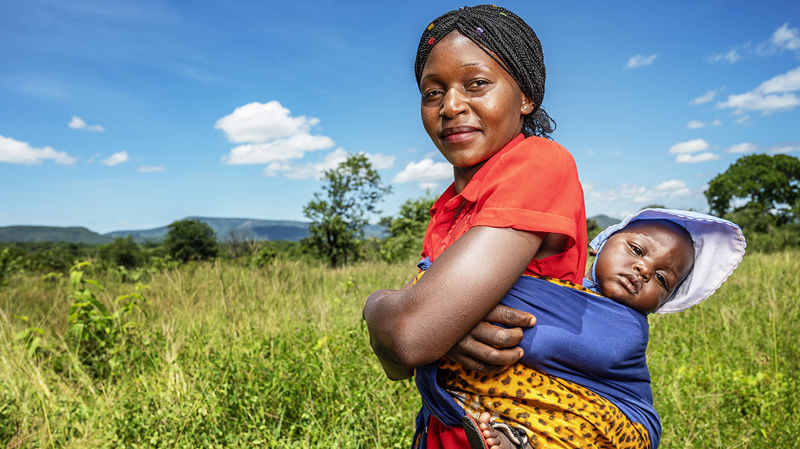Getting results! How we helped around the world at year 2022

The work of the Red Cross would not be possible without the support of its donors and sponsors. Thanks to this, we can quickly and effectively help those who need the aid the most. See below how we helped people last year.
In 2022, the Finnish Red Cross participated in long-term development cooperation in ten countries in Africa, three countries in Asia and one country in the Middle East, supported by the Ministry for Foreign Affairs of Finland. Through our development cooperation, more than 910,000 people received aid last year.
We strengthened the disaster readiness of communities and helped them prepare for the impact of climate change, such as crises resulting from extreme weather phenomena.
We improved female health through community-based projects. We particularly focused on the sexual and reproductive health and rights of women and girls.
In addition to the development cooperation supported by the Ministry for Foreign Affairs, we also delivered humanitarian aid to disaster areas. We responded to the humanitarian needs caused by the Ukraine crisis. We helped the East African communities suffering from the hunger crisis and continued our work of responding to prolonged humanitarian crises in especially challenging environments, such as Afghanistan and Myanmar.
We worked in crisis areas where development cooperation and humanitarian aid are intertwined. We raised awareness of our local partners’ roles and supported the safety of volunteers and employees and their access to the people in need of aid.
We strengthened the capacity of our local partners so that they can operate efficiently as a humanitarian organisation in their own country. It is essential that the local Red Cross or Red Crescent society gives a voice to the communities and is able to provide services to the most vulnerable people throughout the country, since the fastest and most valuable aid comes from nearby.
The Finnish Red Cross also joined a collection of projects in 24 different countries, funded by the European Union. The projects strengthen the Red Cross and Red Crescent organisations and local communities in the target countries. The projects focus on disaster preparedness, pandemic readiness and cash assistance.
In addition to the Finnish Red Cross, work involves ten national Red Cross societies from Europe. The Finnish Red Cross was involved in projects in Eswatini, Somalia, Cambodia and Tajikistan. The projects reached almost 4.6 million people overall.
The international aid work of the Finnish Red Cross is made possible by the support of the Disaster Relief Fund donors, companies, the Ministry for Foreign Affairs of Finland and the European Union.
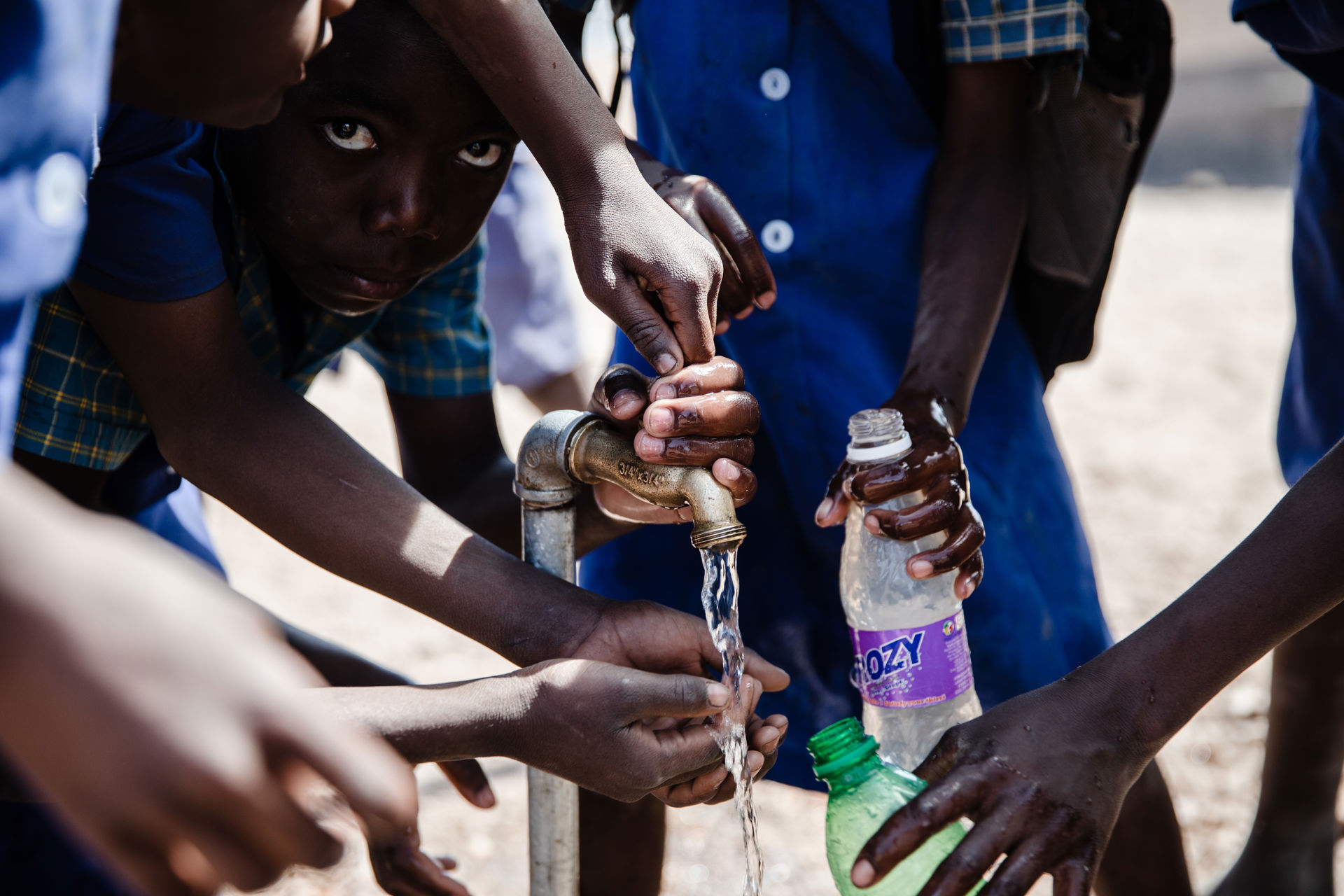
We strengthened communities’ resilience against climate change
We supported disaster preparedness work to strengthen communities’ adaptivity to crises caused by climate change. We developed the readiness of communities through various disaster preparedness exercises and simulations. We supported climate-smart agriculture and improved the availability of clean water.
We reached a total of 112,700 people who benefited from community-level preparedness work. Now these people are better prepared, able to act more rapidly during a crisis and also able to recover from disasters faster.
With our support, 45 communities are now using early warning systems. Early warning systems help communities react faster to crises caused by extreme weather phenomena and also prepare for them more comprehensively.
Examples of climate actions that we supported:
- In Ethiopia, we improved water availability and supported communities’ resilience against drought. We built two water basins and restored a water pipeline that now benefit 25,960 people.
- In Kenya, we trained 475 farmers to take part in climate-smart agriculture. They also received information about the impact that climate change has on agriculture and about the benefits of growing saplings. 170 students were trained to start nursery gardens.
- In Malawi, a total of 67,730 people benefited from community-level preparedness measures. For example, we trained 270 people in using the early warning systems. They shared weather forecasts and data with their respective communities and helped them choose the most suitable plants for cultivation, with regard to the negative impact of climate change. 11,650 families moved to using climate-friendlier stoves.
- We worked with the local community in Zimbabwe to develop and test early warning systems and the operations based on them in case of draught.
- In Kenya, Rwanda and Tanzania, we launched a project based on early warning systems. During the project, we cooperate with local Red Cross societies, local meteorological institutes and the Finnish Meteorological Institute.
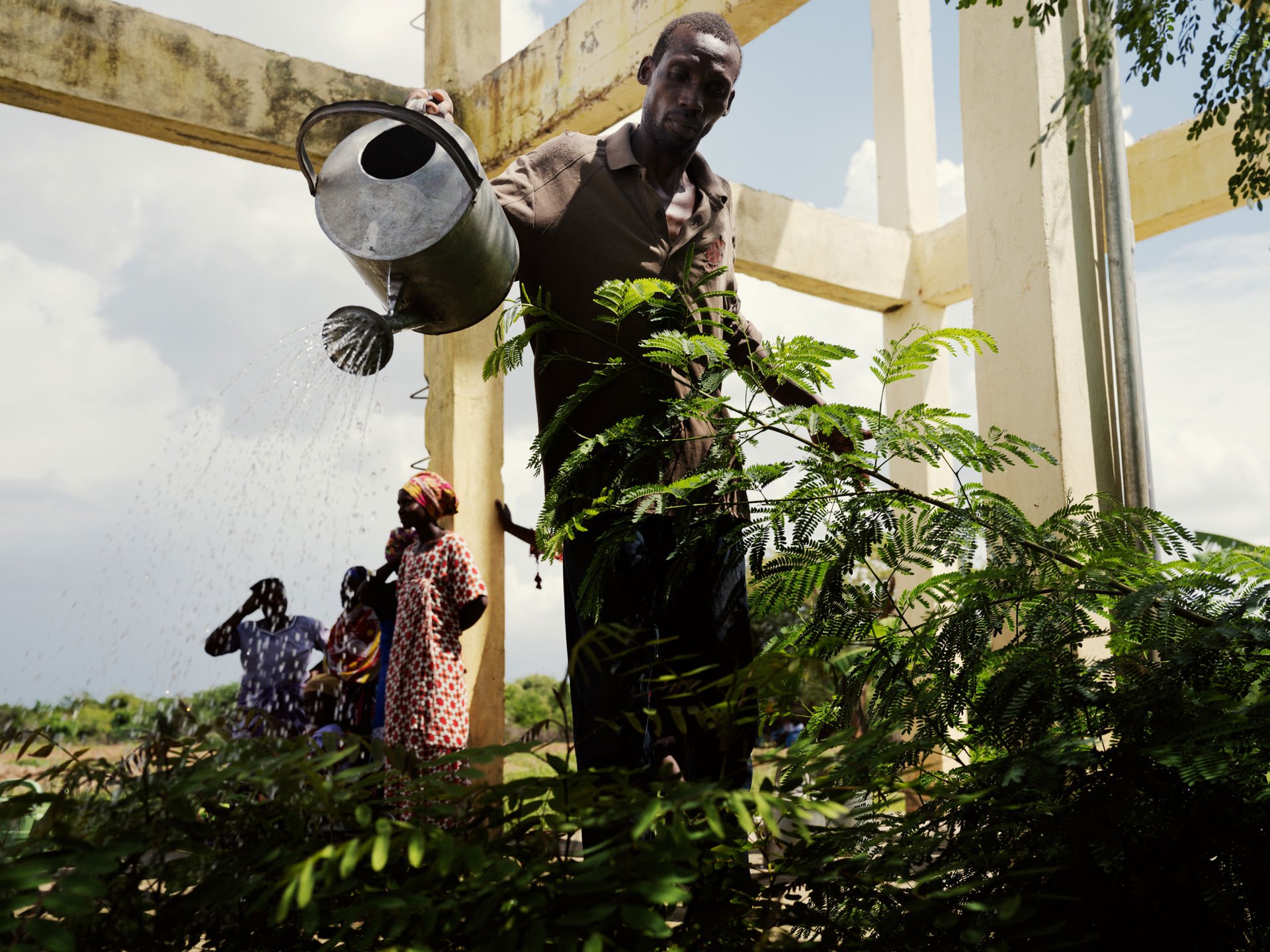
Working against climate change in Nepal
We supported the work against climate change in Nepal, for example. The country is extremely vulnerable when it comes to climate change. The overall climate in Nepal will be significantly warmer and more humid in the future.
Climate change is causing extreme weather phenomena in Nepal, such as flooding and drought. It is also changing the cycle of the rainy seasons. These have a significant impact on the availability of clean water and people’s health and livelihoods, such as agriculture.
We supported the disaster readiness of communities by organising disaster preparedness exercises and simulations with the Nepal Red Cross Society and updating their disaster readiness plan.
In Nepal, we trained 379 people from two different municipalities in disaster response so that they would know what to do in case of a disaster. This helps reduce the impact of future disasters.
We reconstructed groundwater basins based on scientific and local knowledge. These basins will benefit 1,376 families by offering access to clean water.
Due to climate change, entirely new pests have appeared in Nepal. They cause significant harm to agricultural production. We trained 60 local farmers in using organic fertilisers and pesticides.
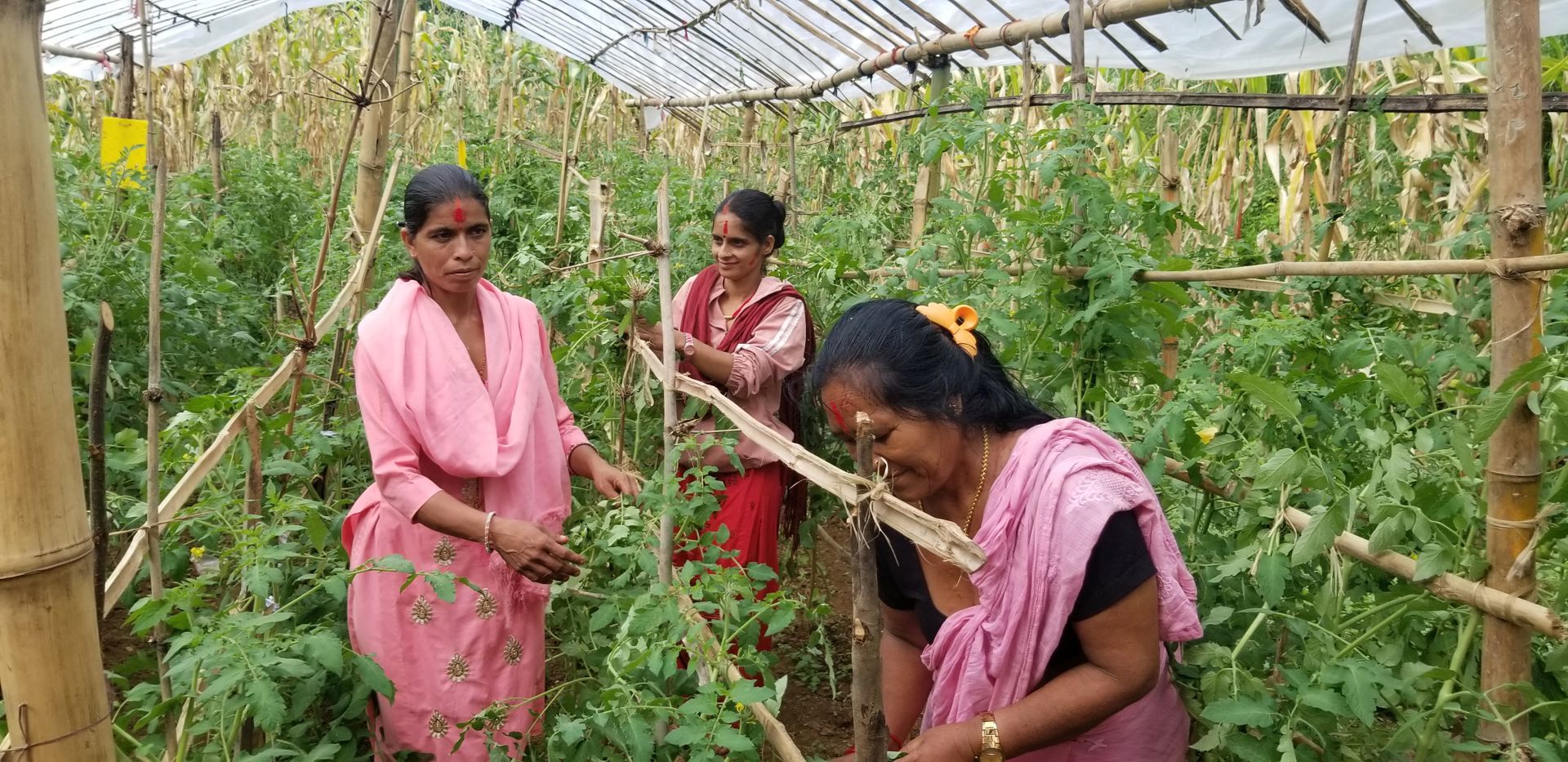
We promoted female health
The Finnish Red Cross improved female health in 2022. We particularly focused on the sexual and reproductive health and rights of women and girls. The Finnish Red Cross stands for the fundamental rights of women and girls so that they can make independent decisions on their own bodies and live without facing violence and abuse.
Climate change, access to water and the hygiene services available have a significant impact on the health of women and girls.
Climate change increases the occurrence of contagious diseases and weakens the food security of families, which in turn increases the malnutrition of women and children in particular.
If clean water is not available, women are forced to travel farther to get water, which may make them vulnerable to violence.
Hygiene is an essential part of staying healthy, which is why we educate women on good menstrual hygiene and seeking out healthcare services for childbirth.
Last year, 76,400 people had access to high-quality and non-discriminative sexual and reproductive health services through our work. We restored and built 50 water outlets through which more than 170,000 people can access clean water. A total of 101,600 people received information on how to prevent diarrhoea, pneumonia and malaria among children under the age of 5.
Examples of actions supported by us that improve female health:
- In Burundi, children’s health improved as volunteers made house calls and raised awareness of the importance of vaccines and the healthy nutrition and diet of babies and young children.
- We distributed menstrual hygiene products to 1,200 schoolgirls in Ethiopia. We also restored and built five sanitary facilities in schools so that women and girls can take care of their menstrual hygiene safely.
- In Kenya, a total of 5,650 people received information on sexual and reproductive health. In addition to this, 30 male influencers reached a total of 580 people. Influencers were tasked with disproving myths about family planning and educating men on their role in improving the health of mothers and children.
- In Malawi, a total of 777 trained volunteers made over 30,900 house calls during which they shared information about cholera, polio, diarrhoea and malaria and the prevention of malnutrition. We also built 28 accessible toilet facilities in schools to benefit more than 6,000 students. We restored 13 wells that gave 3,000 people access to clean water. We distributed over 5,100 reusable sanitary towels to schoolgirls.
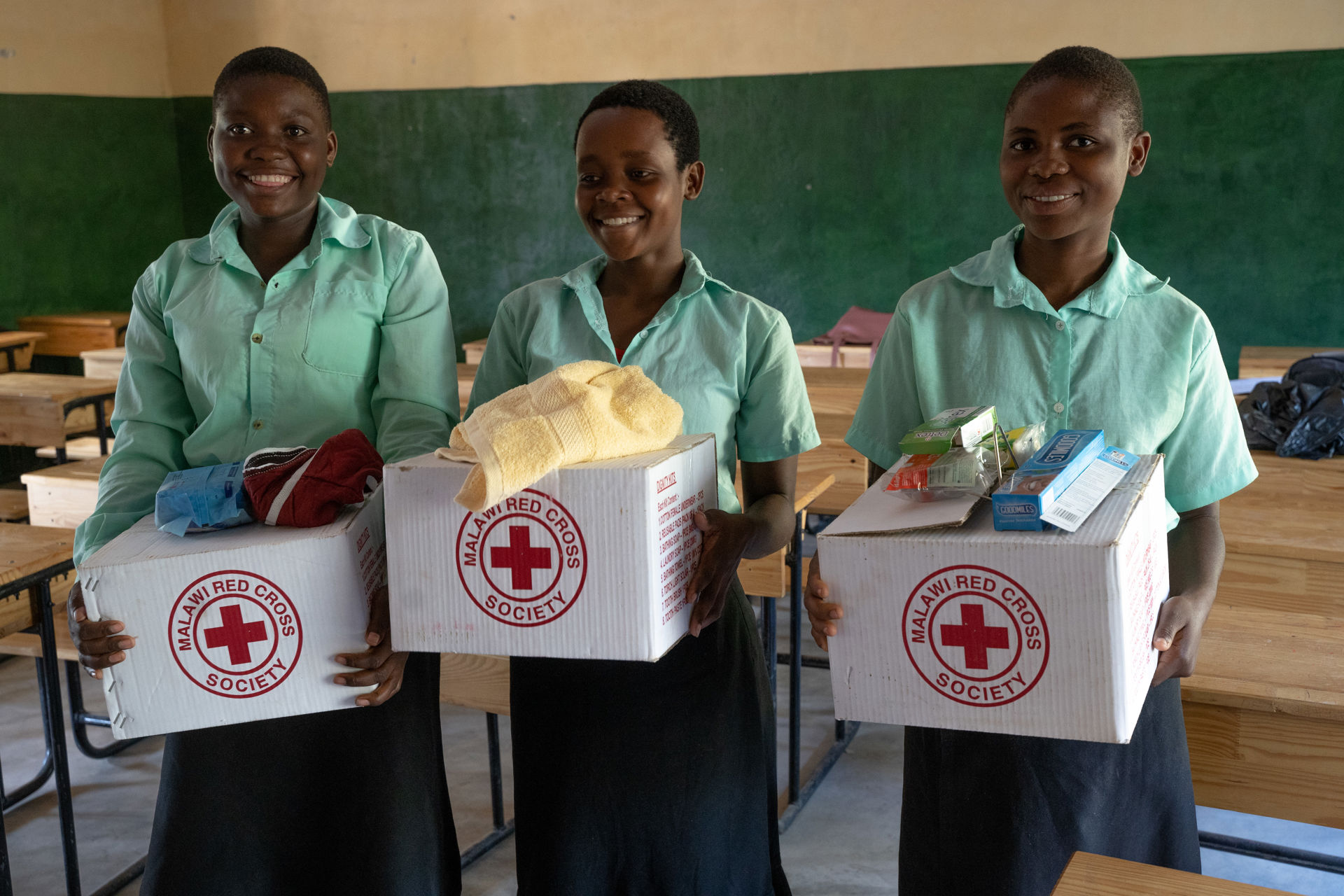
Female health was improved in South Sudan
We worked to improve female health in South Sudan, for example. Gendered violence and gender inequality are common in the country where a conflict has been ongoing for years. Inadequate sanitary facilities in schools and insufficient menstrual hygiene are harming the schoolwork of many girls.
We reached a total of 106,250 people in South Sudan through various health-improving actions. We restored and built ten toilet facilities in schools, six of which also had 11 handwashing stations installed, distributed hygiene packs to 135 schoolgirls, and implemented cleaning campaigns that improved the communities’ immediate environment and increased their awareness of the importance of clean surroundings.
The new and restored school toilets have improved girls’ access to sanitary facilities and increased their school attendance in South Sudan. Girls feels safer during their period, for example, which reduces their absence from school.
Furthermore, distributing hygiene packs and sharing information about menstrual hygiene improves girls’ menstrual hygiene. The hygiene packs contain menstrual protection products, soap and underwear, for example.
We also supported a radio programme on gendered violence and psychosocial support to reach as many people as possible. We involved the leadership of the local communities, religious leaders and local authorities so that they could organise their own events to raise awareness of topics such as gendered violence and its prevention.
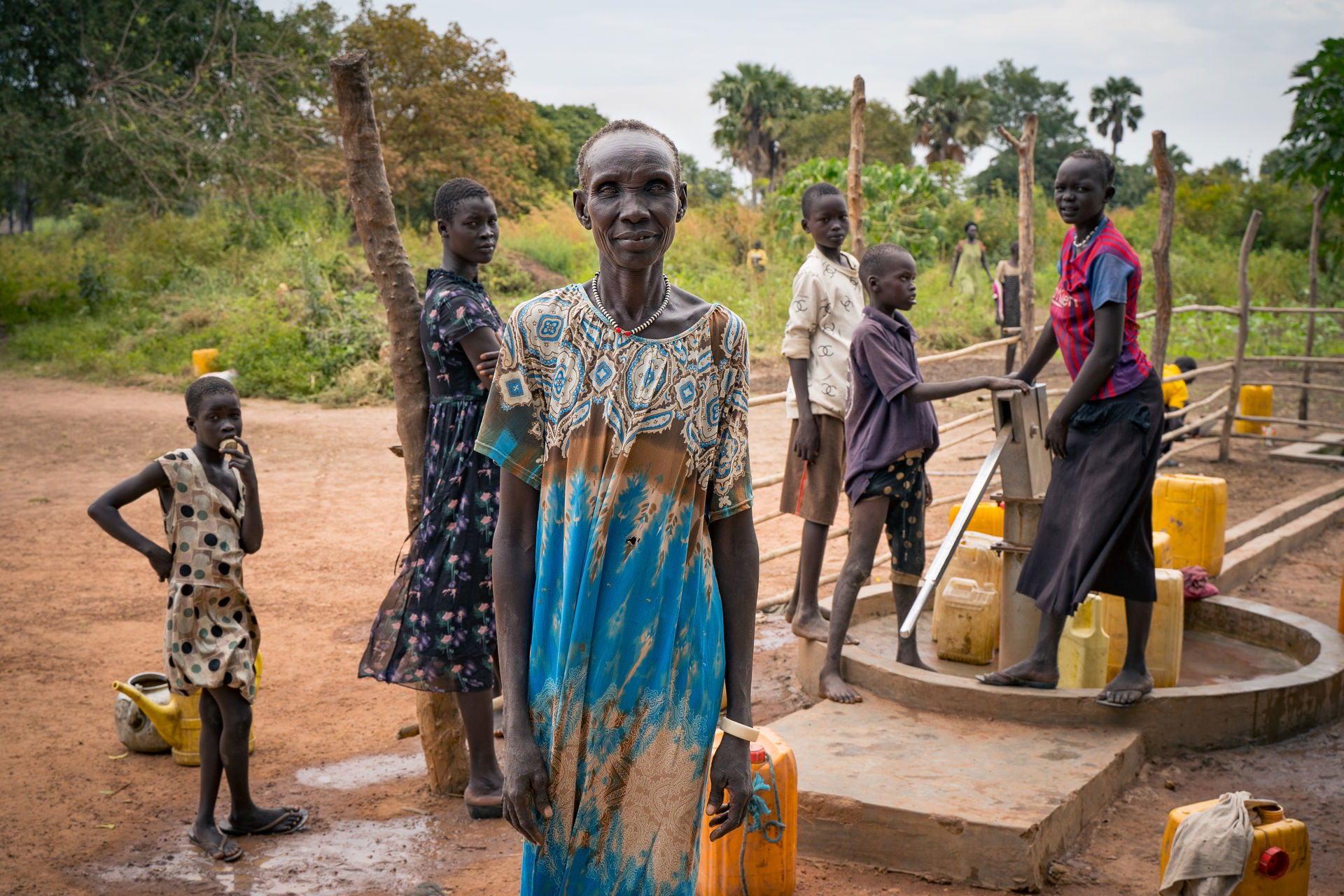
We provided humanitarian aid in crisis areas
Last year, an exceptional number of people required humanitarian aid worldwide.
We continued to provide humanitarian aid to those suffering from the conflict in Ukraine. The need for aid will continue for a long time. The Finnish Red Cross supports the work in Ukraine with funds from the Ministry for Foreign Affairs of Finland and the Disaster Relief Fund. We have also provided financial aid to the International Red Cross.
We sent both material aid and aid workers to Ukraine and the surrounding areas. We delivered products such as tents, blankets and medical supplies. We sent out a health clinic and organised mobile healthcare units in Ukraine. We transferred funds to a cash grant programme that will help the most vulnerable people in Ukraine and its neighbouring countries.
The hunger crisis in East Africa grew worse. There are many reasons behind this development: prolonged conflicts and extreme weather phenomena caused by climate change, such as both drought and flooding, have made the situation more difficult and made agriculture and cattle farming harder.
We gave financial support to the petition of the International Red Cross to respond to the needs arising from the hunger crisis. The operation involved cash grants and support for healthcare and families’ income, for example.
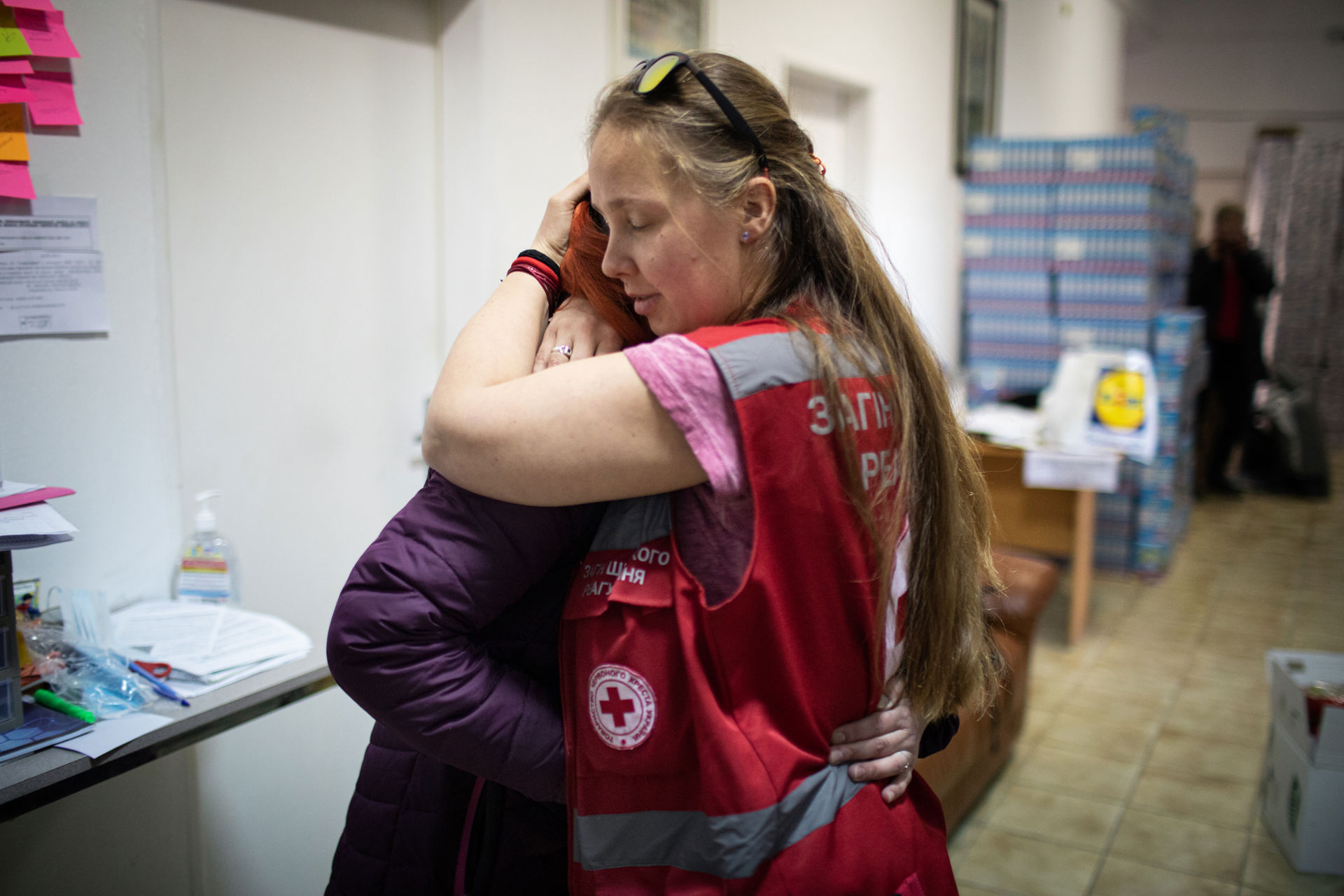
The prolonged humanitarian crisis in Afghanistan has grown worse since the Taliban rose to power. The country’s economy has taken a downward turn, poverty has increased, and the three-year drought, worsened by climate change, have led to a severe lack of food security and spread humanitarian suffering.
We supported the Red Cross emergency aid operation in Afghanistan. The operation focuses especially on the acute food shortage through livelihood, food and cash support and help with the basic needs of families suffering from the drought. The aid also reaches women and children who are especially vulnerable.
The humanitarian situation in Myanmar remains difficult and is getting worse. Widespread violence and the socio-economic effects of the crisis have a severe impact on the local population. We supported the Red Cross emergency aid operation in Myanmar. Through the operation, we can deliver vital humanitarian aid to people who had to flee their homes in Northwest and Southeast Myanmar.
We distributed aid supplies, such as hygiene packs, sleeping pads and mosquito nets, and cash grants whenever possible. We also supported primary healthcare services with the help of mobile clinics.
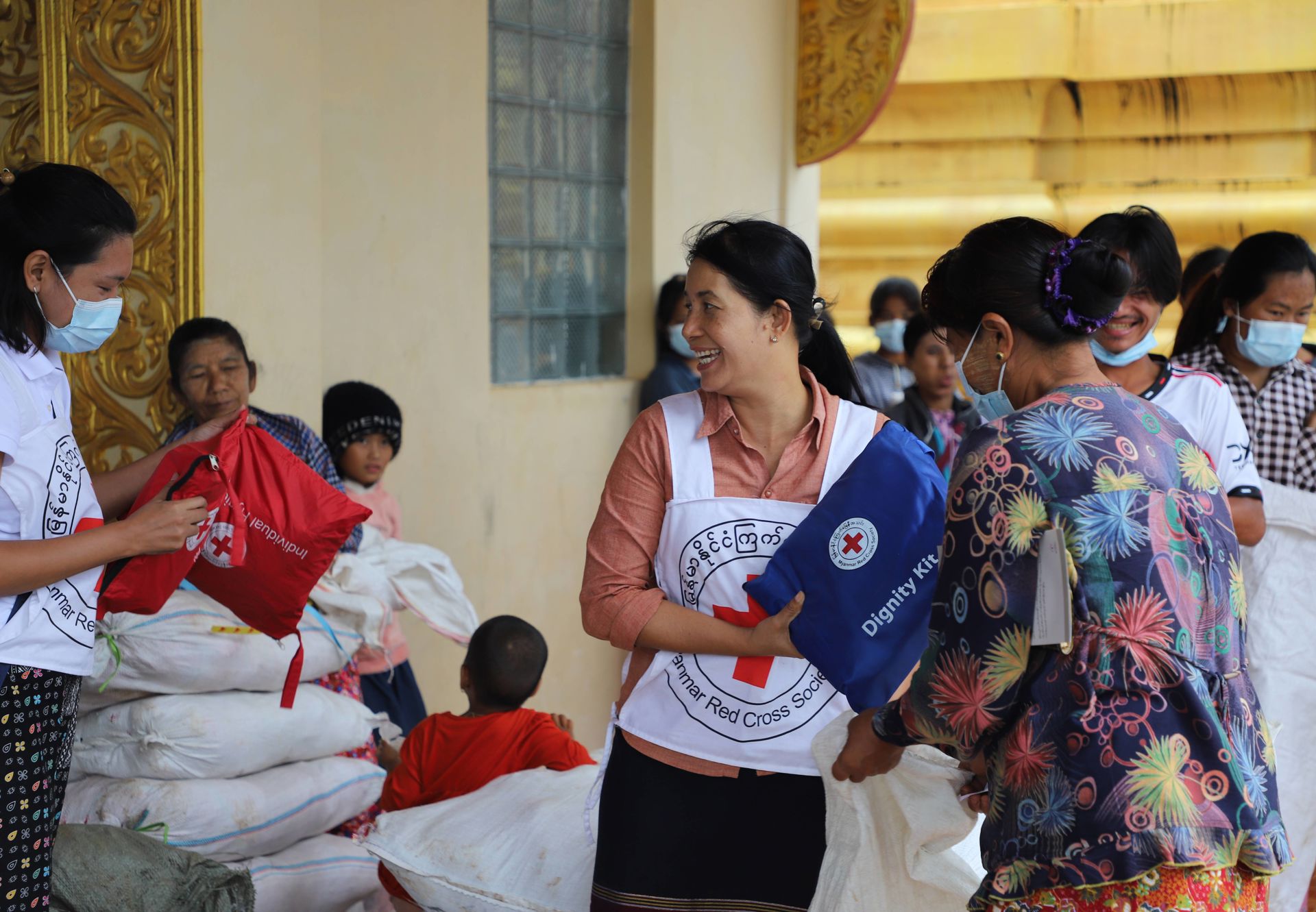
Humanitarian aid and development cooperation go hand in hand
We continued our work with prolonged crises in especially challenging environments. The Finnish Red Cross participates in long-term development cooperation with other Red Cross and Red Crescent societies, which allows for the humanitarian cooperation to continue seamlessly.
In difficult operating environments, the Red Cross and Red Crescent volunteers are often the first, and sometimes the only, aid providers.
They often have exceptional access to various areas and they have an important role in delivering aid to the most vulnerable groups. They provide vital services and immediate humanitarian aid, such as food, water, first aid and psychosocial support.
Examples of work with prolonged crises:
- In Afghanistan, we worked for three years to improve water availability and hygiene awareness. During the project that ended last year, we reached 60, 640 students, teachers and other members of school staff. In addition to this, 3,600 mothers and grandmothers received information on sexual and reproductive health. We also supported 14 mobile healthcare teams of the Afghan Red Crescent Society. The teams included both female and male employees, so they were able to also reach women and children. The teams reached 116,200 patients last year, half of whom were women.
- We supported eight healthcare centres run by the Yemen Red Crescent, which treated 74,560 patients in total.
- We supported the local Red Cross societies in East Africa in crisis communication and social media management to raise general awareness of the Red Cross and improve the availability of humanitarian aid in difficult conditions. We provided training to the staff, developed their ways of communication and shared information about Red Cross activities with various groups.
- In Myanmar, we supported the spreading of health awareness and the accessibility of healthcare services. A total of 25,040 people received information and services regarding sexual and reproductive health and the health of mothers and children.
- In Niger, we started a mobile clinic that supported the operations of the healthcare stations. A total of 5,210 women and girls received information about sexual and reproductive health through these services. In addition to this, more than 32,000 people received more information about menstrual hygiene and birth control methods at various events.
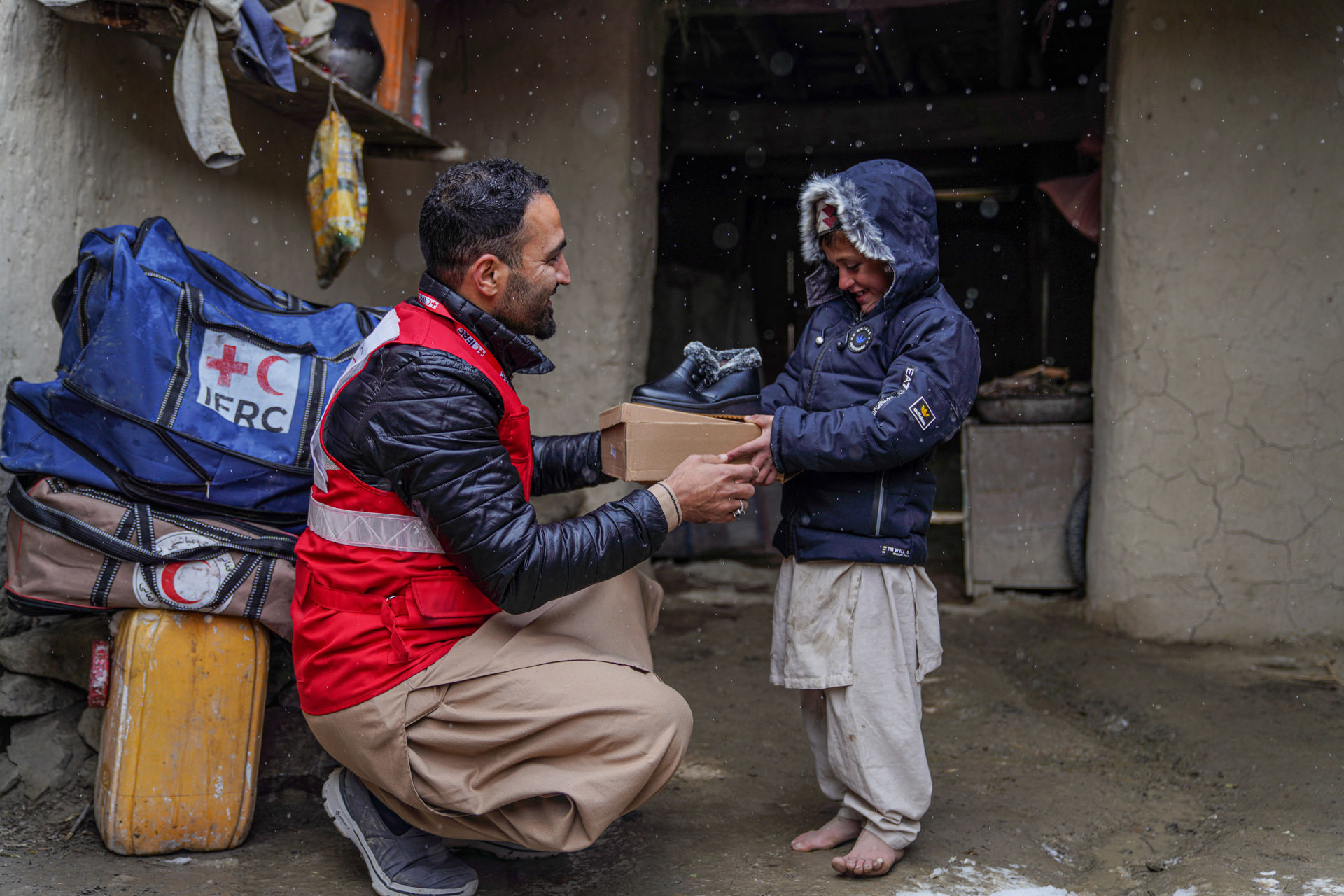
Securing long-term development in Somalia
We continued long-term development cooperation and provided humanitarian aid in Somalia, for example. All of eastern Africa has suffered from unprecedented drought that has severely weakened food security in the area.
We continued our cooperation with the Somali Red Crescent Society who provide services such as primary healthcare to rural communities and people living in areas that are the most difficult to reach.
The Somali Red Crescent Society maintains both mobile and stationary health clinics. In the Puntland and Somaliland areas, there are a total of 12 stationary health clinics, and at least one mobile clinic is constantly operating. The Finnish Red Cross supported seven stationary clinics in Somalia last year.
A total of 74,100 patients received care at the clinics, which provided services such as primary healthcare, vaccinations, nutritional support and screening for malnutrition. A total of 35,860 children under 5 were screened for malnutrition, and 14,520 children were vaccinated against measles, tetanus, pertussis, hepatitis B and diphtheria.
The clinics also offered sexual and reproductive health services, such as family planning, care during and after pregnancy and childbirth, and HIV testing. A total of 20,860 women received care during pregnancy, 4,250 women received postnatal care, and 3,560 childbirths were recorded at the clinics. 550 people were tested for HIV.
The volunteers of the Somali Red Crescent spread hygiene awareness, lectured about healthy nutrition for babies and small children and shared information about the dangers of female genital mutilation.
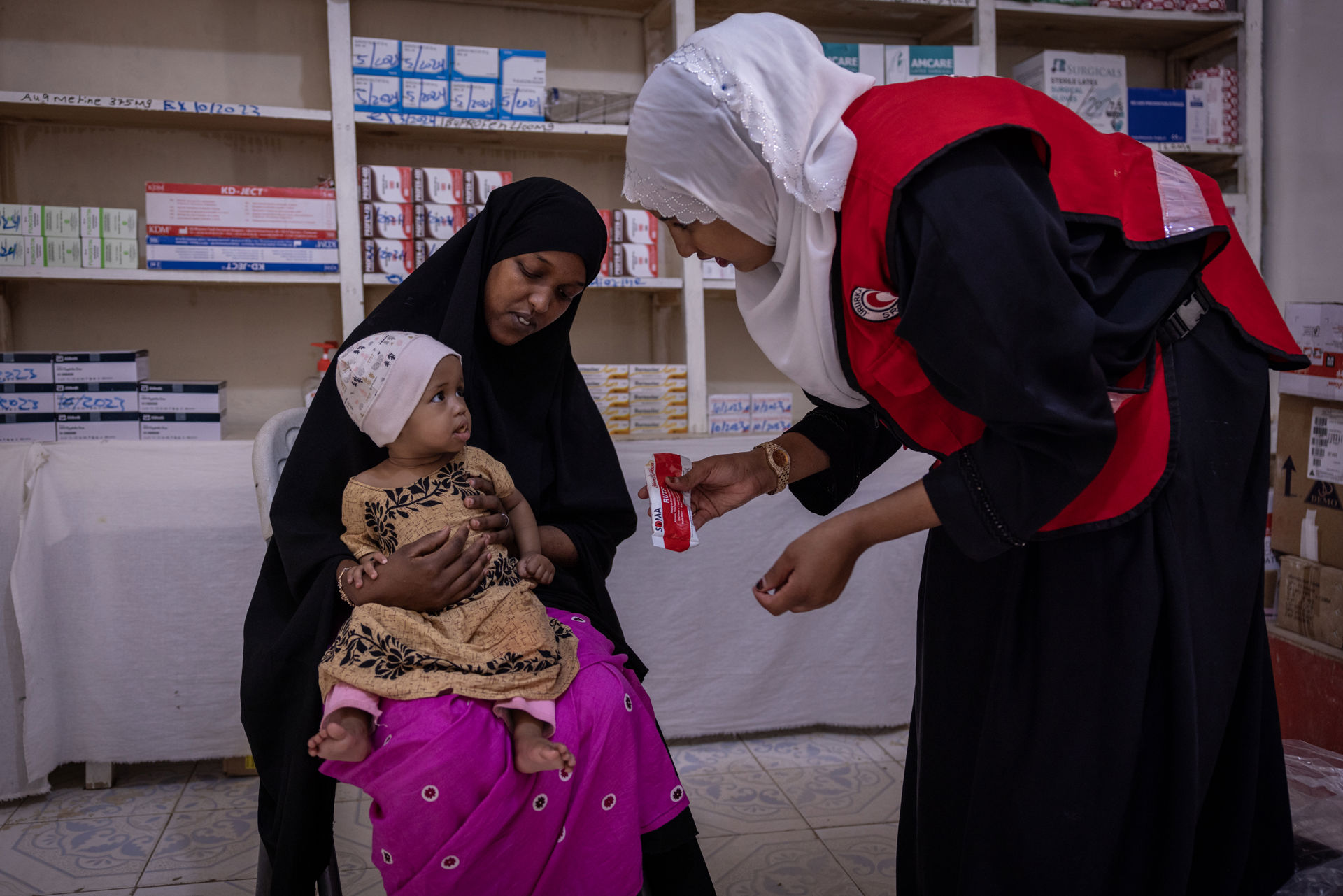
We supported local partners
A key goal of the long-term development cooperation of the Finnish Red Cross is to strengthen the local Red Cross and Red Crescent societies. We aim to support our partner societies so that they can provide vital aid and significant support nationwide.
The Red Cross and Red Crescent branches give a voice to the local communities and their needs. We supported the development of 34 branches last year.
This includes support for fundraising and administration and the development of volunteer activities, for example. A strong Red Cross or Red Crescent society needs members and volunteers of different ages and genders and from both rural and urban areas.
We cooperated with our partner societies to raise awareness of the obstacles encountered by people with disabilities, for example. We organised education sessions on the rights of people with disabilities and how they can be taken into consideration in aid work. We organised training sessions in Malawi, Niger and Zimbabwe.
We also trained 99 employees in handling the causes, risks and consequences of violence, discrimination and marginalisation. The employees came from Niger, Somalia and Zimbabwe.
We developed the financial sustainability and good administration of our partners in Eswatini, Sierra Leone and Burundi. We helped our partners analyse their financial management, fundraising and knowledge management needs and move towards more sustainable administration.
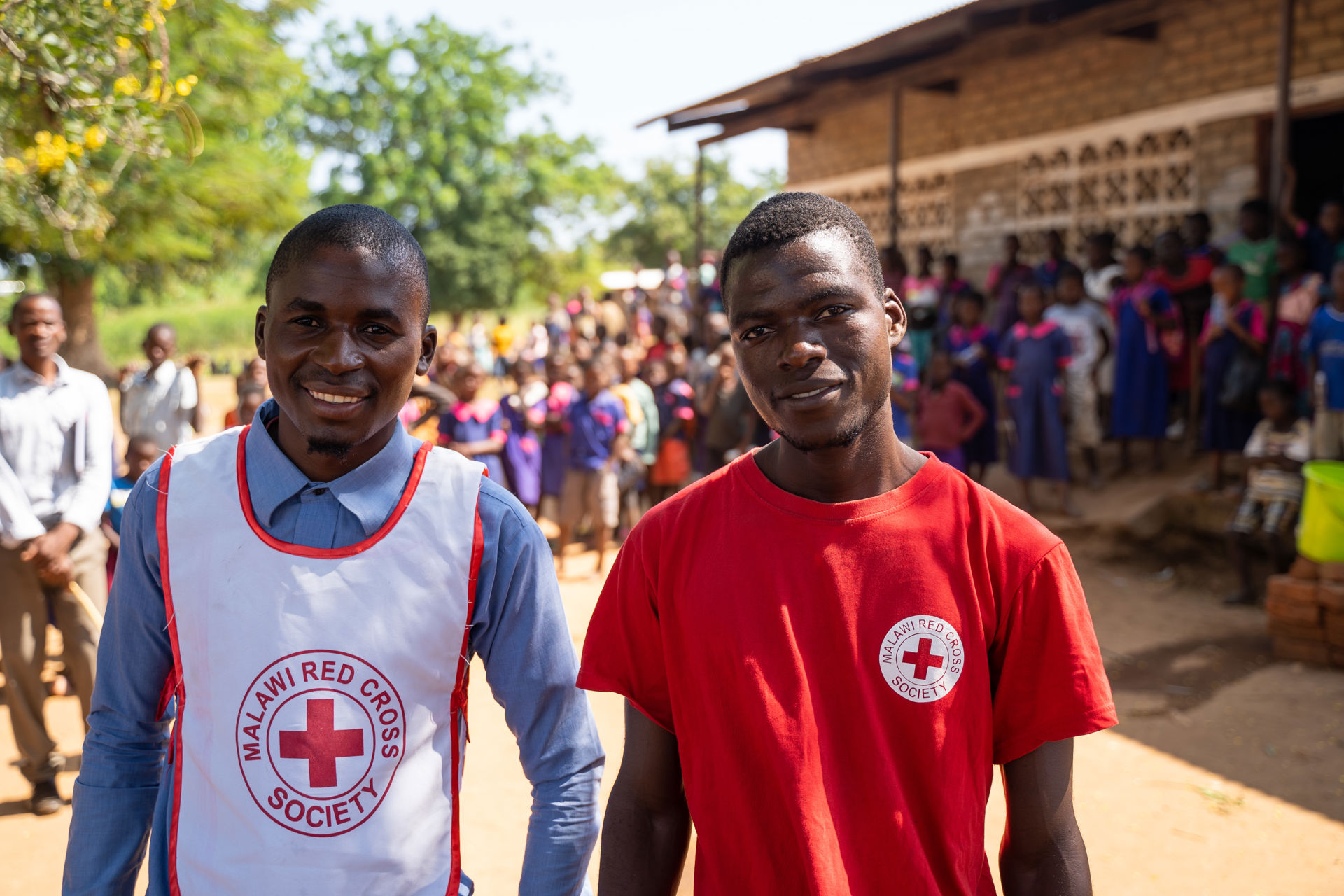

The international aid of the Red Cross
